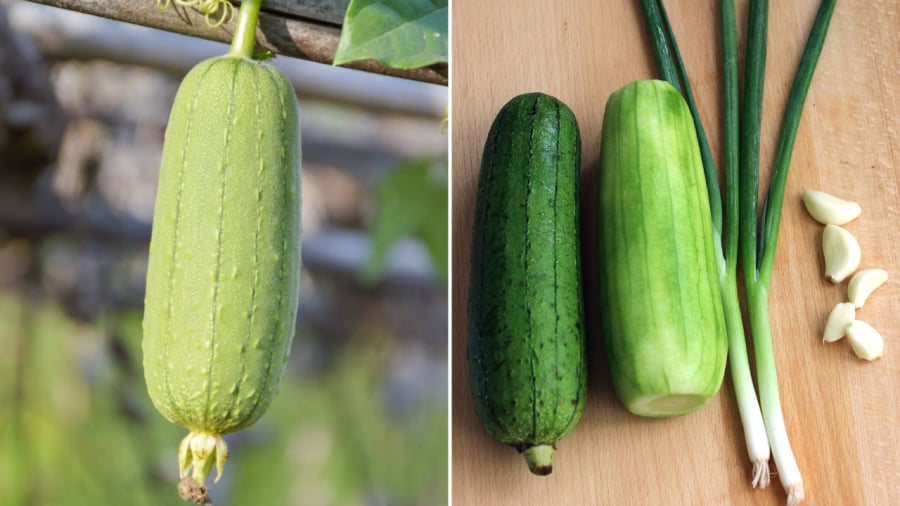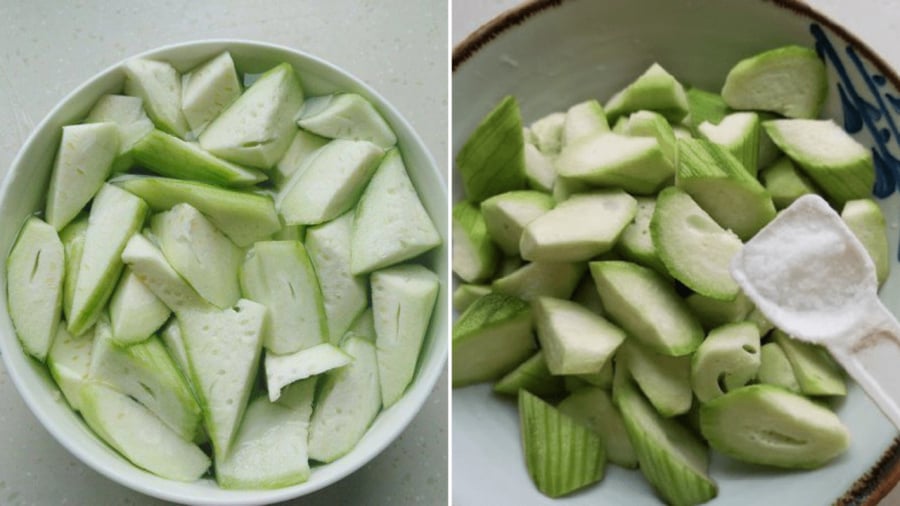Mướp is a versatile and delicious vegetable, commonly used in Asian cuisine. Whether you’re stir-frying or cooking a hearty soup, bitter melon is a unique and healthy ingredient. However, a common issue many cooks face is the discoloration of the melon, which can be unappetizing. Here’s a simple guide to ensure your bitter melon dishes always look and taste great.
Selecting the Best Bitter Melon
When shopping for bitter melon, choose ones with a slight curve as these tend to be more flavorful. Look for a uniform shape with both ends of similar size. The skin of fresh bitter melon is typically a deep green color; avoid pale green ones as they may indicate inadequate sunlight exposure during growth.

Choose firm, well-shaped bitter melons without any attached flowers. Avoid wrinkled or overly soft melons.
Another sign of freshness is the absence of flowers attached to the stem end. If the flower is still present, it may indicate the melon is immature or has been treated with growth stimulants. Fresh bitter melon should also have a slightly rough texture to the touch, and the stem should feel firm, not soft or spongy.
Preparing Bitter Melon for Cooking
Peel the bitter melon and cut it in half lengthwise, then slice it into uniform pieces. Place the melon in a bowl and sprinkle with a little salt, tossing to coat. Let it sit for about 5 minutes; this process helps prevent discoloration and adds flavor. Rinse the salted melon briefly before cooking to remove excess salt.

A quick salt rub is a great way to season and prevent discoloration in bitter melon.
Alternatively, you can soak the sliced melon in a bowl of diluted vinegar for about 3 minutes, then rinse and pat dry. This method also helps prevent oxidation and discoloration during cooking.
Cooking Tips to Avoid Discoloration

Stir-fry bitter melon quickly over high heat to retain its shape and texture.
When stir-frying or cooking bitter melon, work quickly as it tends to cook fast. High heat and a short cooking time help retain the shape and texture of the melon. Season with a light touch, as the melon has been salted already, and remember that bitter melon has a natural sweetness that enhances the overall flavor of your dish.
The Secret Ingredient to a Husband’s Admiration: A Wife’s Clever Rice Trick
The prolonged pandemic has instilled a sense of preparedness in all of us, especially when it comes to stocking up on non-perishable goods. And one staple that we absolutely cannot do without is rice. However, storing rice for extended periods without proper preservation methods can lead to an infestation of pests, which could potentially harm the health of your family.






































